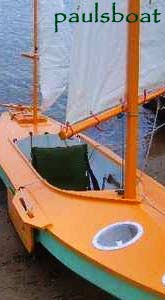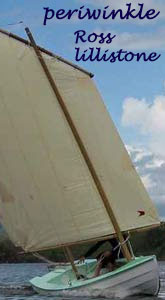Parts
1- 2 - 3 - 4 - 5 - 6 - 7 - 8 - 9 - 10 - 11 - 12 - 13 - 14
I’d say that we are either at a significant waypoint in this Frankenbuild journey; or at the crest of a particularly pernicious slippery slope. I took a pretty big chance and doubled down on a sketchy bet. But, like long odds everywhere, it could turn out alright. I kinda’ think it will.
It’s called “springback.” When you torture some sort of sheet goods into a bend that the fibers and grain and thickness and so forth are all set up to defy; even after doing something to give that panel a “set.” I don’t think it’s ever really possible for it to not return to the original flat form to some degree. It sure doesn’t seem possible for my “lid” to simply be fabricated with a pleasing level of camber dialed in - and just stay put. First, I set up a 4-foot segment on the bench and attempted to build it piece by piece. But, I got worried that the pieces would resist coming together after the individual curves were “set in glue.” Logic demanded that I put the whole thing together of a single piece.
Just like Pinocchio’s nose. It grew and grew and grew.
Until this contraption was taking up a whole parking space out in the garage.
About then, it sort of slapped me up’side the head. Since this thing was probably going to spring back a fair amount, anyway: Why not just over-bend it in the first place? Yeah. So, I started piling up the “precision mandrel” under the spine, and piling up heavy stuff around the edges to hold things in place while the globs of PL Premium that I spread around between the styro sheets started to hold hands in a more determined manner.
Until, I had an eight foot chunk of quarter-wall square steel tube, a set of snow tires, heavy jack stands, and a few odd trailer parts piled up around the edges to pull this huge mouse trap into place. After sitting unmolested for an entire day shift, I rolled the weights off and, presto, there was this really-big sheet of curved Styrofoam. And, just like I figured, the whole thing started to lose its camber almost immediately. Ah, what to do, what to do?
By then, it was already at the end of the night shift. I really, really, should have just called it quits. Right, then and there. What I had, was really big, and really fragile. Awkward, to say the least. And, I still had to find a way to carry it without breaking it apart. I had to get it hoisted up onto the deck and marked for edge trimming. For things to work out, I knew that “accuracy” depended upon the huge thing staying in something resembling the final-form camber. I had also tried to “eyeball it in” to give the forward sections a greater hump than the aft ones in a determined - but wildly imprecise - attempt to deal with all those geometric realities that would certainly still need dealing with. Like I was saying, the better part of valor would have been to declare victory, and quit the field.
Instead. Somebody from the Bright Idea Department pointed out that I was simply going to need more thickness built up over the whole surface of the top to keep things in place. I’ve been saving this really heavy five-foot wide roll of specially treated kraft paper that my neighbor gave me, for several years. That guy from the BID reminded me about a guy who is a friend of The Lucas - who Dave says, “Heaven forbid, but this guy thinks like you do…” - had discovered the hot setup for gluing sheets of paper to sheets of Styrofoam.
This was one of those, “Hold my beer, and watch this!” moments.
This contraption is too wide to reach across, and too fragile (presumably) to walk on. I need to keep the weights around the edges to hold the shape. But. To build up thickness, those tires and all that heavy jangle of stuff has to be someplace else. Once the spray glue is sprayed. The paper roll is unrolled. The 10-foot length is cut off and pulled across the floor to the scene of the crime. Stuff starts of change shape and move around. More than I’d like. Mostly, wrinkles began forming in the paper. Time to quit?
Yep. It really was time to quit. But, none of those voices of reason, caution, and care from my morning staff meeting were still around the shop. So, in the immortal words of Admiral Farragut, “Damn the torpedoes! Full speed ahead!” I kept piling on layers of paper and glue to my unholy alliance of Styrofoam and PL. And, snow tires. Can’t forget the snow tires. As wrinkles formed, I just squeegeed them out with a long handled snow scraper and a push broom. Precision tools if there ever was such a thing.
Now, if some genius at the staff meeting this morning can just tell me how to get this thing flipped over and glued up from the underside before the top resembles a prune in a tanning booth because of our old friend, Mr. Springback; I can just maybe get the damn thing cut to shape and move on to figuring out how to get it levitated into place and supported and held down and a few incidentals like that.
This figure-it-out-as-you-go method of Frankenbuilding can have its difficult moments.
|











